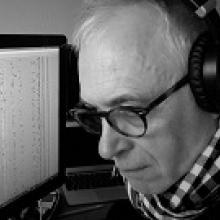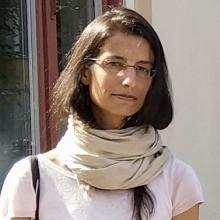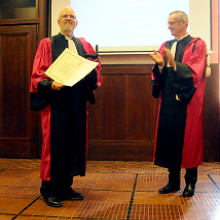Bioinformatics, Phylogeny and Evolutionary Genomics Group
Members
Maîtresse de conférences
UCBL
Tel: 04 72 44 84 87

Professeure des universités
UCBL
Tel: 33 04 26 23 44 76
Doctorante
UCBL
Enseignant-chercheur CPJ
UCBL

Directeur de recherche
CNRS
Tel: 33 04 72 44 62 97

Professeur d'université émérite
UCBL
Tel: 04 72 44 85 60
Ingénieur d'études CDD
CNRS

Directeur de recherche
CNRS
Tel: 33 04 72 43 11 67

Maîtresse de conférences
UCBL
Tel: 33 04 72 43 29 18
Doctorante
UCBL

Chargée de recherche
CNRS
Tel: 33 04 72 44 85 60

Directeur de recherche
CNRS
Tel: 04 72 44 84 87

Chargée de recherche
CNRS
Tel: 04 72 43 13 44

Directeur de recherche
CNRS

Maître de conférences
UCBL
Tel: 04 72 43 35 83

Chargée de recherche
CNRS
Tel: 04 72 44 81 42
Doctorant
CNRS

Directeur de recherche
CNRS
Tel: 33 04 72 44 62 96

Chargée de recherche
CNRS
Tel: 04 72 43 26 28
Doctorant
UCBL

Chercheur invité
UCBL
Our group focuses on two main axes: phylogenomics (i.e. the inference of evolutionary history based on genomics data) and evolutionary genomics (understanding the molecular and population processes that drive genome evolution). We see genomes both as a subject of research (how do genomes evolve, why are they structured the way they are?), but also as a main source of empirical knowledge about the macroevolutionary patterns (what do they tell us about the history of life on Earth?), or about the phenotypes and life-history strategies of organisms. Our works heavily rely on methodological developments (bioinformatics, modeling and statistical inference).
Evolution of genome architecture and expression
Genomes are the result of a long-term evolutionary process, shaped by multiple evolutionary forces. Some genomic features are adaptive (i.e. are beneficial for the fitness of organisms), others result from non-adaptive processes (random drift and biased gene conversion - BGC) or are caused by conflicts between multiple levels of selection (e.g. meiotic drive or the spread of selfish genetic elements). We explore different aspects of genome architecture (base composition landscapes, genome structure and size, impact of transposable elements, …) or functioning (gene expression, lncRNAs, epigenetic landscapes, …), and try to disentangle the relative contribution of adaptive and non-adaptive processes to their evolution. For this purpose, we consider both the molecular mechanisms (mutation, repair, recombination) and the population processes (selection, drift, BGC, …) that shape genetic variation.
Phylogenomics
We are interested in reconstructing the history of life on Earth. This research unfolds along several axes. First, we develop phylogenomic databases of aligned genetic sequences (e.g. BIBI, RiboDB or HOGENOM). Second, we conduct methodological research on how to accurately reconstruct deep phylogenies, infer divergence times, reconstruct ancestral genetic sequences, gene repertoires and life-history traits. This methodological work is translated into publicly available software programs (e.g. SeaView, PhyloBayes, Coevol). Finally, we apply these approaches to several important problems, among which: reconstructing the phylogeny of animals, of archaea, or the global tree of life; using phylogenies and ancestral gene repertoires to investigate the evolution of complex systems and the emergence of molecular and cellular functions in the three domains of life; reconstructing ancestral genetic sequences, a research activity that has industrial and biotechnological applications.
Teaching and outreach
We teach at University Lyon 1 (Master Bioinfo@Lyon), INSA, ENS Lyon, we organize bioinformatics internships. We regularly give conferences on evolution (tree of life, human evolution, genetic diversity, …).
Prospective students and postdocs are invited to apply, as we often welcome visitors for internships or research projects.
Keywords: Molecular evolution and Population Genomics; Phylogenomics; Computational Genomics; Comparative genomics; Bioinformatics; Statistical inference.
Publications
Display of 931 to 960 publications on 1109 in total
The covariation between TpA deficiency CpG deficiency and G+C content of human isochores is due to a mathematical artifact
Molecular Biology and Evolution . 17 : 1620-1625
Journal article
see the publicationNature and structure of human genes that generate retropseudogenes
Genome Research . 10 : 672-678
Journal article
see the publicationDeterminants of substitution rates in mammalian genes: expression pattern affects selection intensity but not mutation rate
Molecular Biology and Evolution . 17 : 68-74
Journal article
see the publicationUse of a TT virus ORF1 recombinant protein to detect anti-TT virus antibodies in human sera
Journal of General Virology . 81 : 2949-2958
Journal article
see the publicationThe Enhanced Microbial Genomes Library
Nucleic Acids Research . 27 : 63-65
Journal article
see the publicationEMGLib: the enhanced microbial genomes library (update 2000)
Nucleic Acids Research . 28 ( 1 ) : 68-71
DOI: 10.1093/nar/28.1.68
Journal article
see the publicationPhylogenetic analysis of the small subunit ribosomal RNA of Marteilia refringens validates the existence of phylum Paramyxea (Desportes and Perkins 1990)
Journal of Eukaryotic Microbiology . 47 ( 3 ) : 288-293
Journal article
see the publicationCodon usage and the origin of P elements
Molecular Biology and Evolution . 17 : 467-468
Journal article
see the publicationTransposons but not retrotransposons are located preferentially in regions of high recombination rate in Caenorhabditis elegans
Genetics . 156 : 1661-1669
Journal article
see the publicationChromosomal distribution and coding capacity of the human endogenous retrovirus HERV-W family
AIDS Research and Human Retroviruses . 16 : 731-740
Journal article
see the publicationMultiple alignments for structural functional or phylogenetic analyses of homologous sequences
incollection . -- : 51-76
Journal article
see the publicationSequence of the Small Subunit Ribosomal RNA Gene of Perkinsus atlanticus-like Isolated from Carpet Shell Clam in Galicia Spain
Marine Biotechnology . 2 : 419-428
Journal article
see the publicationThe evolutionary history of ribosomal protein RpS14: horizontal gene transfer at the heart of the ribosome
Trends in Genetics . 16 ( 12 ) : 529-533
Journal article
see the publicationAbsence of translationally selected synonymous codon usage bias in Helicobacter pylori.
Microbiology . 146 ( Pt 4) : 851-60
Journal article
see the publicationMolecular Systematics of sponges (Porifera)
Hydrobiologia . 420 ( 1 ) : 15-27
Journal article
see the publicationA nonhyperthermophilic common ancestor to extant life forms
Science . 283 ( 5399 ) : 220-221
Journal article
see the publicationAccounting for evolutionary rate variation among sequence sites consistently changes universal phylogenies deduced from rRNA and protein-coding genes
Molecular Phylogenetics and Evolution . 13 : 159-168
Journal article
see the publicationCharacterization of Unexpected Growth of Escherichia coli O157:H7 by Modeling
Applied and Environmental Microbiology . 65 : 5322-5327
Journal article
see the publicationA model describing the relationship between regrowth lag time and mild temperature increase for Listeria monocytogenes
International Journal of Food Microbiology . 46 : 251-261
Journal article
see the publicationSynonymous codon usage variation among Giardia lamblia genes and isolates.
Molecular Biology and Evolution . 16 ( 11 ) : 1484-95
Journal article
see the publicationRetrotransposons and retroviruses: analysis of the envelope gene
Molecular Biology and Evolution . 16 : 1198-1207
Journal article
see the publicationRegulation of dauer larva development in Caenorhabditis elegans by daf-18, a homologue of the tumour suppressor PTEN
Current Biology . 9 ( 6 ) : 329-334
Journal article
see the publicationHuman and nematode orthologs--lessons from the analysis of 1800 human genes and the proteome of Caenorhabditis elegans
Gene . 238 : 163-170
Journal article
see the publicationMolecular characterization and placental expression of HERV-W a new human endogenous retrovirus family
Journal of Virology . 73 : 1175-1185
Journal article
see the publicationHOVERGEN: comparative analysis of homologous vertebrate genes
incollection . 978-0-7923-8573-8 : 21-35
Book chapter
see the publicationExpression pattern and surprisingly gene length shape codon usage in Caenorhabditis Drosophila and Arabidopsis
Proceedings of the National Academy of Sciences of the United States of America . 96 : 4482-4487
Journal article
see the publicationJaDis: computing distances between nucleic acid sequences
Bioinformatics . 15 : 424-425
Journal article
see the publicationIs the evolution of transposable elements modular?
Genetica . 107 : 15-25
Journal article
see the publicationProteome composition and codon usage in spirochaetes: species-specific and DNA strand-specific mutational biases.
Nucleic Acids Research . 27 ( 7 ) : 1642-9
Journal article
see the publication
